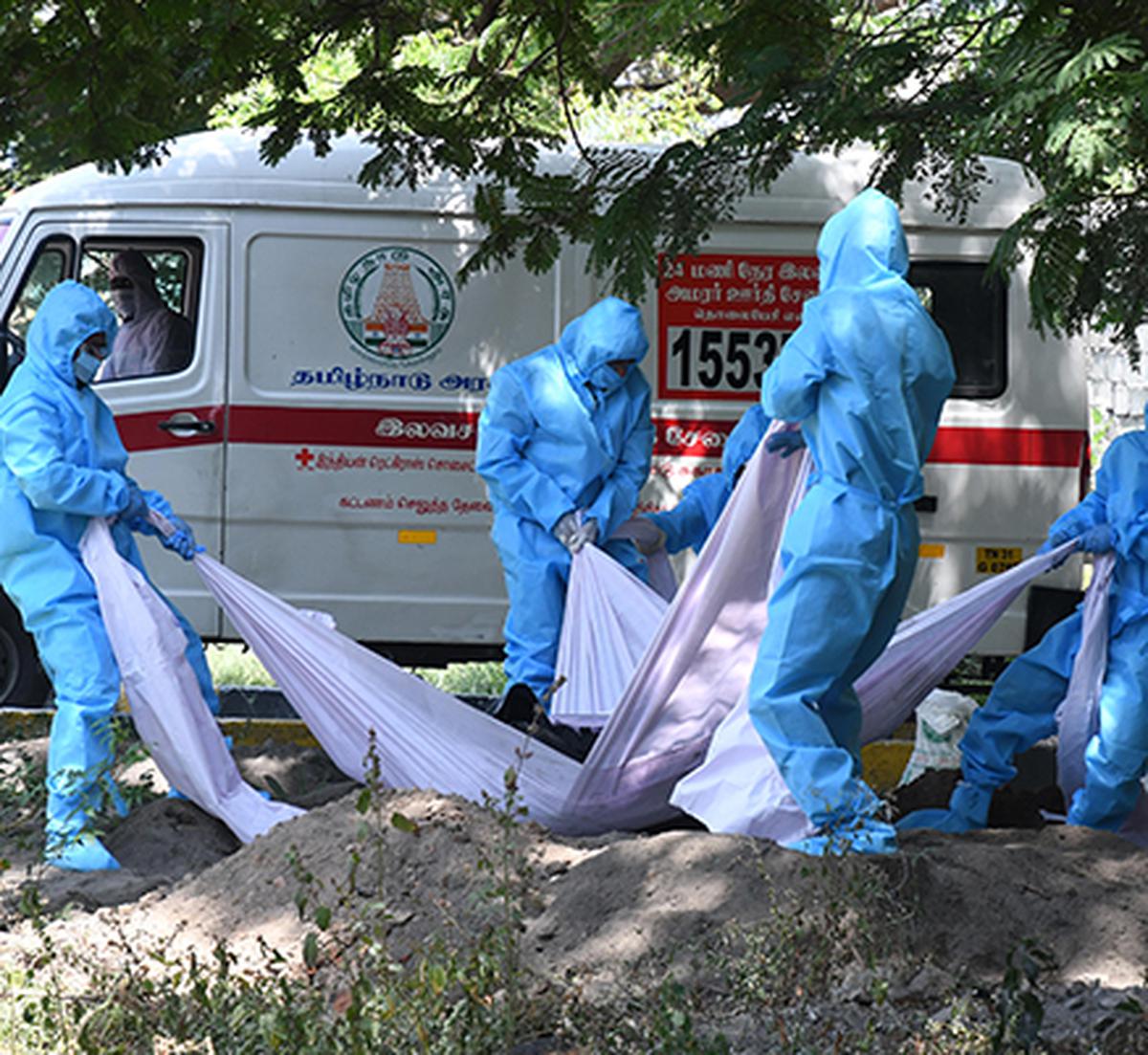
Data | Deaths, inaccuracies and statistics: The case of the SRS 2020
The Hindu
India’s total death rate remained constant in 2020, even as male and female death rates increased
Counting the dead is a daunting task, especially in India. The country accounts for roughly 17% of the deaths worldwide but still doesn’t have a system that can accurately count the number of deaths. While the Civil Registration System (CRS) and the Sample Registration System (SRS) measure mortality, both come with their own limitations.
The CRS is a record of vital events such as birth, death and stillbirth at the place of occurrence. But not all deaths are registered in India and a significant number is recorded beyond the prescribed time limit of 21 days. The SRS is a large-scale survey that provides an estimate of the death rate or the number of deaths per 1,000 population. While the SRS is considered far more reliable, reports state that in several States, the registered deaths exceed the estimates provided by the SRS.
The release of the SRS Statistical Report 2020 in September has yet again raised questions about India’s mortality estimates. The report states that the death rate was 6.0 per 1,000 in 2020. In a year affected by the pandemic, the estimated death rate remained unchanged from 6.0 in 2019.
By contrast, the CRS showed that India had an estimated 8.2 lakh excess deaths in 2020. Excess deaths were calculated as the difference between the registered deaths in 2020 and the average number of deaths registered in 2018 and 2019. The deaths were 5.5 times the official COVID-19 death toll recorded in 2020. Table 1 lists the State-wise average number of registered deaths in 2018 and 2019, deaths in 2020, excess deaths, official COVID-19 deaths and the undercount factor for 2020. States such as Bihar, Maharashtra and West Bengal had a high burden of excess mortality, but when compared with the official COVID-19 toll, Bihar, Assam and Madhya Pradesh had the highest undercount factor. There are issues with the CRS numbers as well — some States such as Uttar Pradesh and Bihar have historically lower registration rates compared to other States. In Uttar Pradesh, in particular, there was a sudden drop in registered deaths in 2020.
The average number of deaths and deaths registered in 2020 is in lakh. UF stands for undercount factor. Mah stands for Maharashtra, Chh stands for Chhattisgarh and Jha is Jharkhand
Charts appear incomplete? Click to remove AMP mode
While the CRS shows excess mortality, the SRS, which is also used to assess the completeness of registration in the CRS, failed to capture this despite an increase in the death rate of males and females. As per ‘Table 13: Annual estimates of Death rate by sex, India and bigger States/UTs, 2015-20’ of the SRS, the death rate rose from 6.5 to 6.6 in 2020 for males and from 5.0 to 5.4 for females. However, the total death rate remained at 6.0. Similar inconsistencies were observed in States such as Madhya Pradesh, Assam and Himachal Pradesh. All three recorded a fall in the total death rate in 2020 even as the death rates of males and females showed a rise. In Himachal Pradesh, for instance, the death rate of males jumped from 7.1 to 8.1 and for females, it rose from 3.9 to 5.5, but the total death rate declined from 6.9 to 6.8 in 2020. In Karnataka, the death rate remained constant even as the female death rate rose significantly in 2020. Table 2 shows the State-wise total, male and female death rates in 2019 and 2020.





















 Run 3 Space | Play Space Running Game
Run 3 Space | Play Space Running Game Traffic Jam 3D | Online Racing Game
Traffic Jam 3D | Online Racing Game Duck Hunt | Play Old Classic Game
Duck Hunt | Play Old Classic Game











